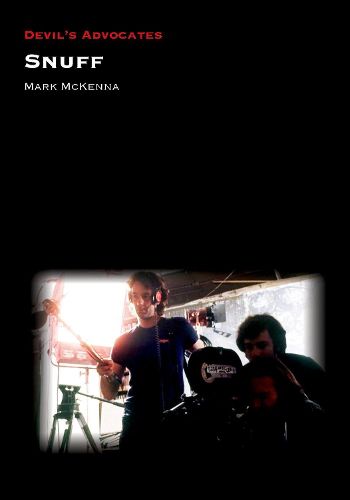Readings Newsletter
Become a Readings Member to make your shopping experience even easier.
Sign in or sign up for free!
You’re not far away from qualifying for FREE standard shipping within Australia
You’ve qualified for FREE standard shipping within Australia
The cart is loading…






Snuff (1976) occupies a unique place in cinematic history, as the first commercially successful film to capitalise upon the myth of the ‘snuff’ movie. By blending cinema verite styling with a media moral panic, savvy producer Allan Shackleton’s blending of a long-forgotten exploitation film with a newly filmed bloody, if unconvincing conclusion, only served to consolidate the belief that somewhere, at some time, someone was killed on camera in an attack that was as much about the sexual gratification of the film’s intended audience, as it was about the commercial rewards for those producing the film. In the years since its release, the film has been routinely cited as ‘evidence’ of the snuff movie’s existence, contributing to a cultural history that exists outside of the film. This book explores the production, distribution and exhibition of the film Snuff, alongside that cultural history, considering how a scarcely seen exploitation film contributed to a popular understanding of the snuff movie. It assesses the cultural, cinematic and political legacy of the film and asks whether the established definition of what might constitute a snuff movie, that was defined 45 years ago, is sufficient in an attention economy that is based upon participatory culture.
$9.00 standard shipping within Australia
FREE standard shipping within Australia for orders over $100.00
Express & International shipping calculated at checkout
Snuff (1976) occupies a unique place in cinematic history, as the first commercially successful film to capitalise upon the myth of the ‘snuff’ movie. By blending cinema verite styling with a media moral panic, savvy producer Allan Shackleton’s blending of a long-forgotten exploitation film with a newly filmed bloody, if unconvincing conclusion, only served to consolidate the belief that somewhere, at some time, someone was killed on camera in an attack that was as much about the sexual gratification of the film’s intended audience, as it was about the commercial rewards for those producing the film. In the years since its release, the film has been routinely cited as ‘evidence’ of the snuff movie’s existence, contributing to a cultural history that exists outside of the film. This book explores the production, distribution and exhibition of the film Snuff, alongside that cultural history, considering how a scarcely seen exploitation film contributed to a popular understanding of the snuff movie. It assesses the cultural, cinematic and political legacy of the film and asks whether the established definition of what might constitute a snuff movie, that was defined 45 years ago, is sufficient in an attention economy that is based upon participatory culture.